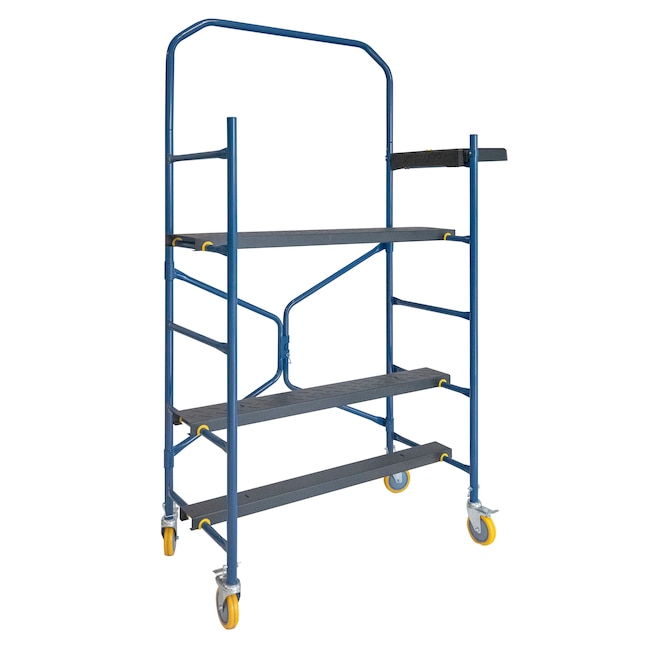Dependable Domestic Scaffolding for Homeowners in Need of Safe Renovations
Dependable Domestic Scaffolding for Homeowners in Need of Safe Renovations
Blog Article
Discovering the Various Kinds Of Scaffolding Made Use Of in Construction Jobs
The construction industry counts heavily on different types of scaffolding to satisfy certain job requirements, each offering unique benefits and applications. Standard framework scaffolding supplies a sturdy foundation for basic jobs, while suspended scaffolding is crucial for job on skyscraper frameworks.

Conventional Framework Scaffolding
Conventional structure scaffolding is among one of the most commonly utilized techniques in the building and construction sector because of its effectiveness and flexibility. This system is composed of straight and upright frames that are assembled to produce a steady platform for employees and materials. The primary elements consist of upright posts, horizontal ledgers, and diagonal braces, which with each other provide a strong structure that can support significant lots.
One of the crucial advantages of typical structure scaffolding is its adaptability to various building and construction tasks, varying from household buildings to huge industrial structures. The modular design permits simple assembly and disassembly, making it reliable for both short-term and long-lasting tasks. Additionally, the system can be customized in height and size, accommodating different building designs and site problems.
Security is paramount in scaffolding applications, and standard frame systems are equipped with guardrails and toe boards to stop drops and make certain employee protection. Regular assessments and adherence to security guidelines are vital in keeping the stability of the scaffold (Scaffolding). Overall, typical frame scaffolding stays a basic selection in the building market, giving a reputable system for labor and boosting total task performance

Suspended Scaffolding
Suspended scaffolding offers a distinct remedy for building projects that require accessibility to raised surfaces, especially in scenarios where typical structure scaffolding may be not practical. This kind of scaffolding is normally suspended from the roofing system or top degrees of a structure, making use of a system of wheels, platforms, and ropes to create a working space that can be gotten used to different elevations.
One of the primary benefits of suspended scaffolding is its versatility. It can be conveniently rearranged or reduced to fit changes in building needs, making it excellent for jobs such as home window installation, façade job, and upkeep on high-rise buildings. Additionally, the very little impact of put on hold scaffolding enables better use ground area in metropolitan settings, where area is typically limited.
Security is a critical consideration in the usage of suspended scaffolding. Proper rigging and anchoring systems should be used to make certain security and avoid accidents. Operators should additionally be trained in the risk-free use this tools. Generally, suspended scaffolding offers a reliable and efficient option for accessing hard-to-reach areas in numerous building and construction scenarios, improving both productivity and safety on website.
System Scaffolding
System scaffolding, often pertained to as a modern remedy in the scaffolding industry, includes pre-engineered elements that can be quickly assembled and adjusted for different building jobs. Scaffolding. This kind of scaffolding is characterized by its modular style, which permits flexibility and efficiency on task websites, suiting various elevations and structural requirements
Typically made from high-strength steel or aluminum, system scaffolding supplies boosted resilience and stability. The components include upright blog posts, straight ledgers, and angled dental braces, which adjoin firmly, ensuring a durable structure. The design commonly incorporates standard fittings, streamlining setting up and disassembly processes, thereby minimizing labor time and expenses.

Rolling Scaffolding
Rolling scaffolding is a functional choice to typical fixed scaffolding, developed for wheelchair and simplicity of use on building websites. This kind of scaffolding includes a system sustained by frames with wheels, allowing workers to quickly relocate it as required. The wheelchair attribute considerably boosts efficiency, as it lessens downtime connected with dismantling and constructing dealt with scaffolding.
Commonly constructed from light-weight products such as aluminum or steel, rolling scaffolding provides a durable yet mobile solution for projects requiring regular repositioning - Scaffolding. It is specifically beneficial in tasks such as painting, drywall installation, and electrical work, where access to various heights and locations is necessary
Safety is extremely important in rolling scaffolding style, with features such as locking wheels to avoid unintentional motion when being used, and guardrails to shield employees from drops. Furthermore, many versions are Get More Info adjustable in height, suiting various task requirements.
Cantilever Scaffolding

The layout of cantilever scaffolding normally entails utilizing arms or braces secured to a structure or structure, making it possible for the system to extend external safely. Safety is extremely important; thus, these scaffolds have to be engineered to endure environmental problems and numerous lots. Normal assessment and maintenance are important to ensure visit this page structural integrity and employee security.
Cantilever scaffolding is preferred for its convenience and efficient usage of room, making it a popular choice in urban environments where area constraints are common. Furthermore, it facilitates simpler access to high elevations, eventually contributing to the overall performance of building and construction jobs. As with all scaffolding types, proper training and adherence to security criteria scaffolding occupational therapy are vital for workers utilizing cantilever scaffolding.
Conclusion
Conventional structure scaffolding supplies stability, while put on hold scaffolding provides convenience for elevated tasks. System scaffolding promotes fast assembly, and rolling scaffolding improves flexibility for varying job atmospheres.
Standard frame scaffolding offers a tough foundation for basic jobs, while put on hold scaffolding is crucial for work on high-rise structures.Rolling scaffolding is a versatile alternative to typical fixed scaffolding, developed for wheelchair and ease of use on building websites. As with all scaffolding types, correct training and adherence to safety and security criteria are crucial for workers utilizing cantilever scaffolding.
Conventional framework scaffolding supplies security, while put on hold scaffolding provides adaptability for elevated jobs. System scaffolding facilitates quick assembly, and rolling scaffolding enhances movement for differing job settings.
Report this page